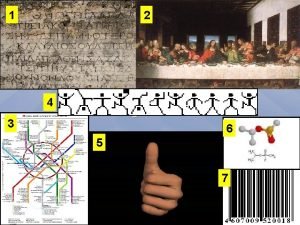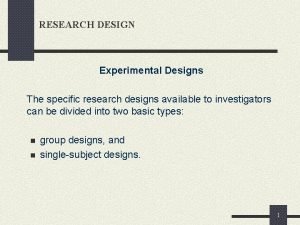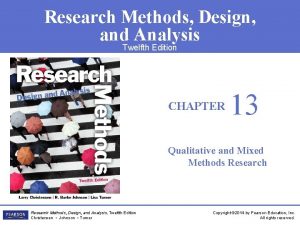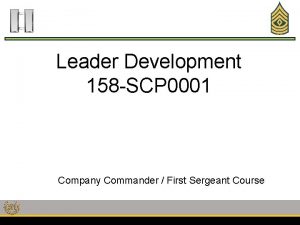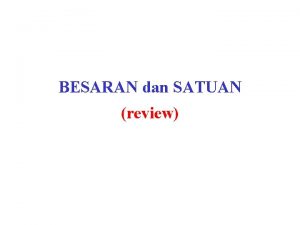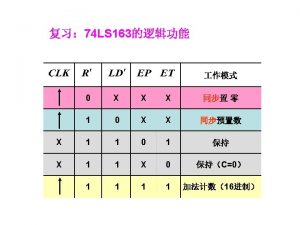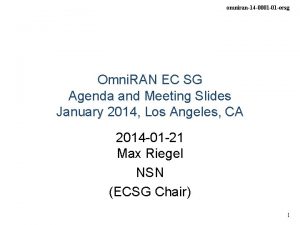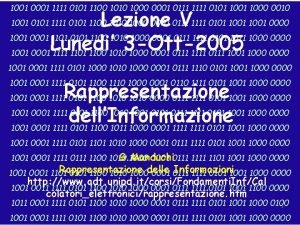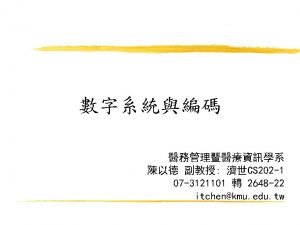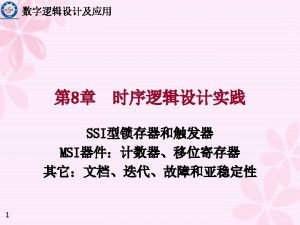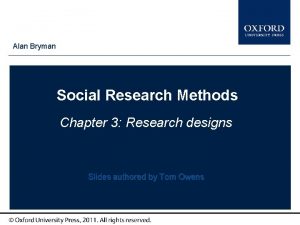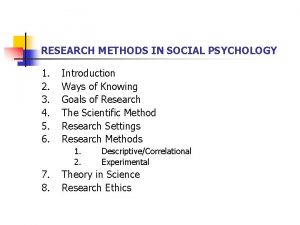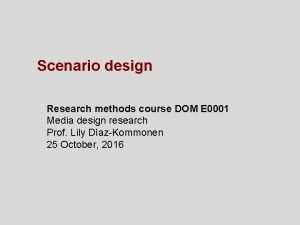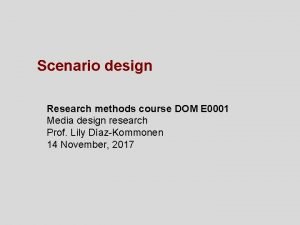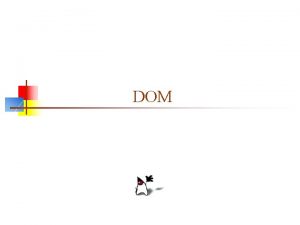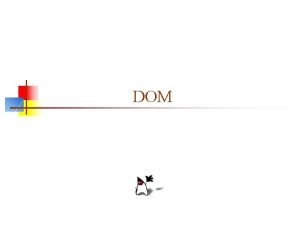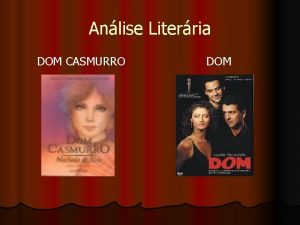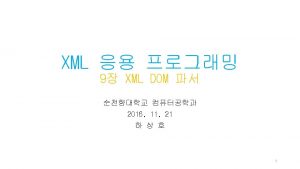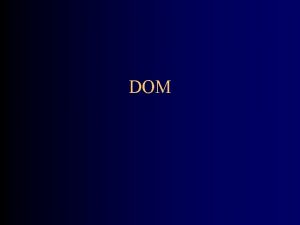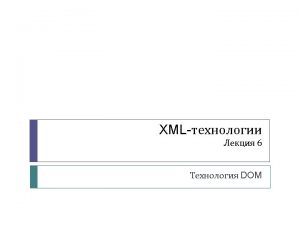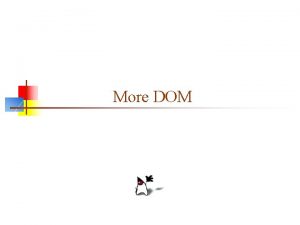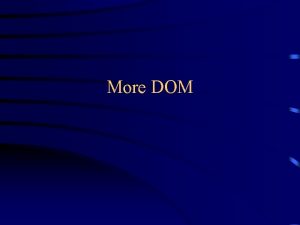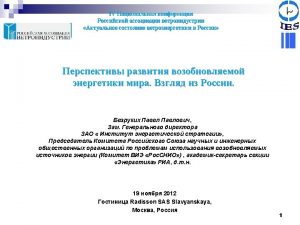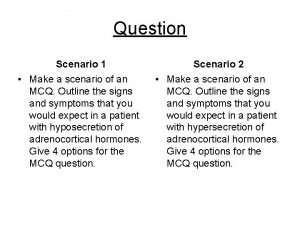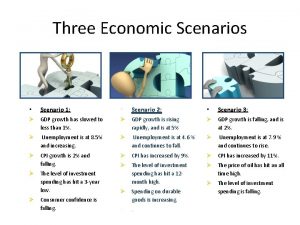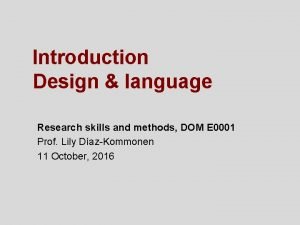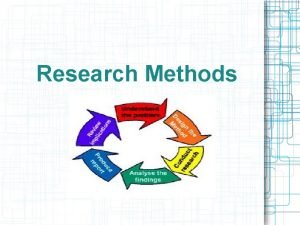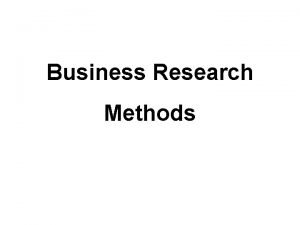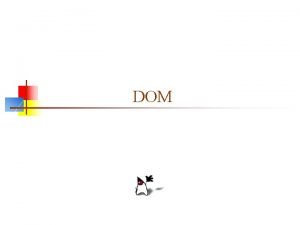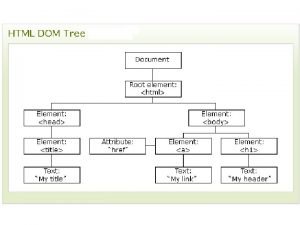Scenario design Research methods course DOM E 0001























- Slides: 23

Scenario design Research methods course DOM E 0001 Media design research Prof. Lily Díaz-Kommonen 12 November, 2019

Conceptual models

7 stages of action Adapted from Donald Norman’s The Pyschology of Everyday Things

Scenario design • Tries to see the situation, or context of use in many different ways, from multiple perspectives, and considering many purposes. • Seeks to envision the concrete elements of a situation, which in many cases does not even exist yet.

Vannevar Bush’s As We May Think

Reaching for the tacit knowledge • Allows a designer to provisionally construct a space of user tasks despite the instability in requirements originating from the context of technology development. • Scenarios concretely embody partial views of a design, thus allowing for feedback.

Reaching for the tacit knowledge • Scenarios can anchor the discussion in the development work, and support participation among stakeholders. • Can enable the designer to integrate the discussion of system requirements while also considering motivational and cognitive issues.

Model by John Carrol

Scenarios are… • Stories… • About people and their activities…

In scenario-based design, descriptions of how people accomplish tasks are used as a primary working design representation.

Tools for representation • Scenarios can potentially represent the material aspects of a concept, or idea – Context of use – Functional characteristics – Details of Form Diaz-Kommonen, Art, fact and artifact production, 2002

What is a scenario? • A method that enables us to communicate (verbal, visual, audio) about how the system we are trying to design enables/constrains/transforms user activity. • A technique used to explicitly envision and document typical and significant user activities early and continuingly in the development process

What is a scenario? • A boundary object that enables communication across a diversity of disciplines and communities (Leigh Star, Griesemer R. 2000, Star 2010).

Elements of scenarios • Title that clearly identifies theme and elements in the scenario and indicates how these are to be interpreted. • Setting: or context of activity that includes artifacts/tools. • Agent(s)/actor(s) that engages in activities; has goals (sub-goals) and objectives as well as performs task (operations).

Elements of scenarios • Plot: that includes sequences of actions and events, things that actors do, things that happen to them, changes in the circumstances of the setting. • Structure that influences to how time unfolds – Linear – Circular – Networked.

Elements of scenarios • Structure – Episodes: ‘Layers’, ‘stages’, ‘levels, ‘clusters’. – Events: ‘Chunks’ of happenings. • Point of view – 1 st person, “I” or “Me” depicts an active agent. – 3 rd person, Spectator that is present or omniscient.

Types of knowledge • Knowing what – Declarative • Knowing why – Semantic • Knowing how – Procedural

3 steps to scenario design Inspired by Cathy Marshall’s work on personnas

Step 1 • Establish a goal, context, or activity – What is needed to describe the scenario’s settings? – Why is the agent/actor using the system? – What will make this interaction successful? – As you create the scenario, try to focus on storytelling; don’t aim to represent a complete activity analysis; select one or two tasks at most and describe the operations that comprise them.

Step 2 • Describe the interaction. – Stay at a high level or avoid too detailed descriptions of the interface – Imagine the new design and how it will help to solve specific problems. – If you have done user research, try to include highlights, in order to make a more compelling story.

Step 3 • Illustrate and analyze the end results – What happens as a result of this interaction? – Was it a success or failure? – What factors might have contributed to the end result?

Scenarios • Can be done using… – Textual accounts – Storyboards – Video – Performance – Other ideas?

Thank you!
 0001 0010
0001 0010 Research design methods
Research design methods Research methods design and analysis
Research methods design and analysis Exploratory research design types
Exploratory research design types Scp-0001
Scp-0001 43.351.097/0001-90
43.351.097/0001-90 0000 0001 0010
0000 0001 0010 To-14-0001-01
To-14-0001-01 0001 1111
0001 1111 0000 0001 0010
0000 0001 0010 1100 0001
1100 0001 Metal coping fpd
Metal coping fpd T junction english bond
T junction english bond Course number and title
Course number and title Course interne moyenne externe
Course interne moyenne externe Methods versus methodology
Methods versus methodology Appendices in research
Appendices in research Research qualitative or quantitative
Research qualitative or quantitative Eight characteristics educational research
Eight characteristics educational research Alan bryman social research methods
Alan bryman social research methods Research methods notes kenya
Research methods notes kenya Methods of social psychology
Methods of social psychology Research methods in developmental psychology
Research methods in developmental psychology Dimensions of research design
Dimensions of research design
